Masonry Walls
1/42
There's no tags or description
Looks like no tags are added yet.
Name | Mastery | Learn | Test | Matching | Spaced |
|---|
No study sessions yet.
43 Terms
Masonry wall
Consists of modular building blocks bonded together with mortar to form walls that are durable, fire-resistant, and structurally efficient in compression.
Unreinforced masonry walls
Also known as plain masonry walls. These incorporate horizontal joint reinforcement and metal wall ties to bond wythes of solid or cavity walls.
Reinforced masonry walls
These walls utilize steel reinforcing bars embedded in grout filled joints and cavities to aid the masonry in resisting stresses.
Abang
Vernacular term for dowels.
Brick
Structural units of clay or shale formed while plastic and subsequently fired.
3-3/4" x 2-1/4" x 8"
Standard size of brick
Building brick
Brick type used for all purposes including facing
Facing brick
Specially processed to give certain specific surface characteristics. This brick is used for exposed masonry surfaces.
Glazed brick
These have a smooth outer surface with a dull satin or high gloss finish. These kinds of brick are load-bearing, fire resistant and impervious. Formed with vertical hollow cores through the body or with scoring on the back.
Fire brick
Also known as refractory brick, used for the lining of furnaces, fireplaces, and chimneys. Originally made from a mixture of flint clay and plastic clay.
Bed
The horizontal surfaces on which the stones or bricks of walls lie in the courses.
Wythe
A vertical layer of masonry that is one masonry unit thick.
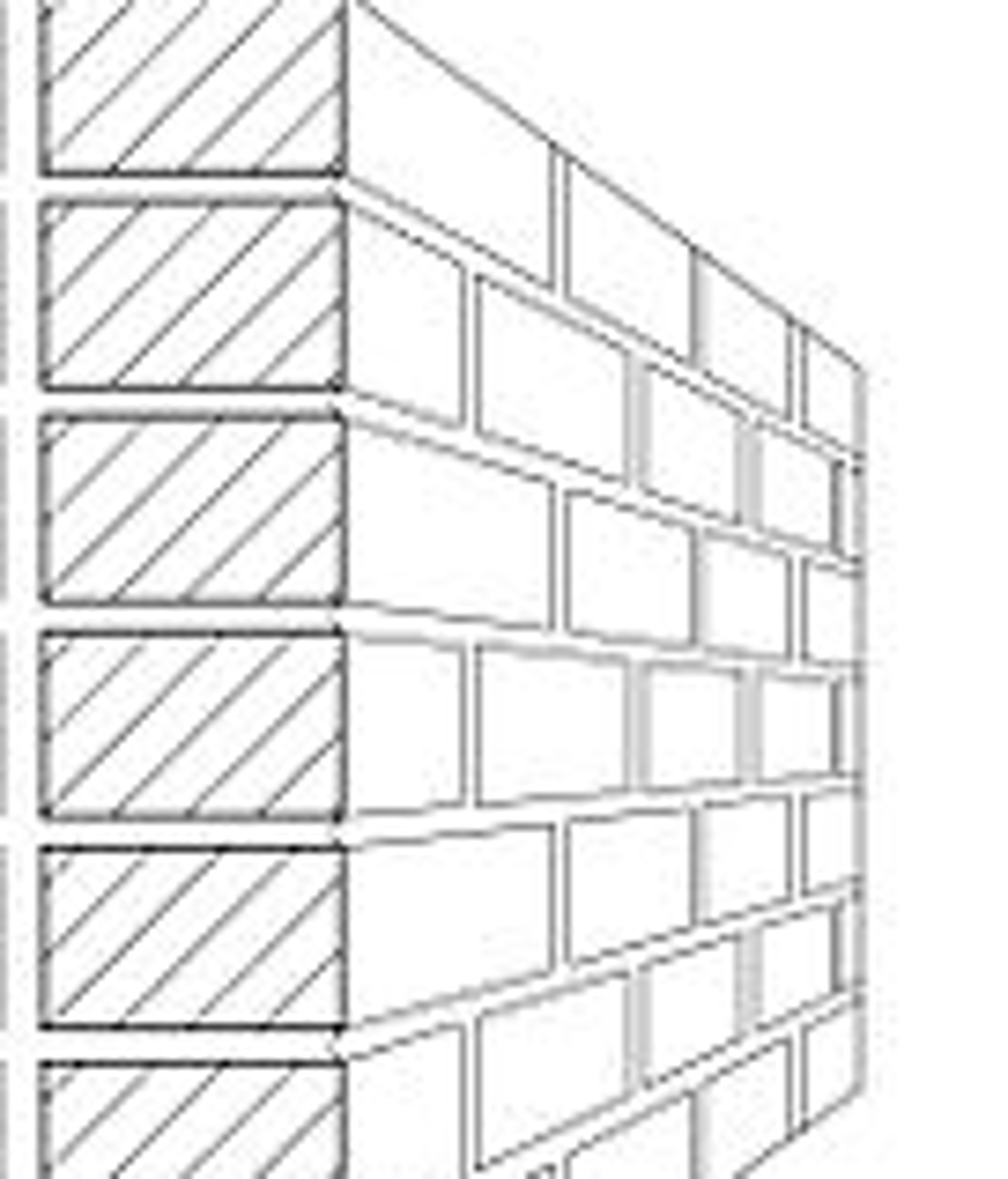
Course
A continuous horizontal layer of masonry units.
Bond
The connection between bricks, stones, or other masonry units formed by lapping them one upon another carrying up the work, so as to form an inseparable mass of building by preventing the vertical joints form falling over each other.
Stretcher
A brick or block masonry laid lengthwise of a wall.

Header
A brick or block masonry extending over the thickness of the wall.
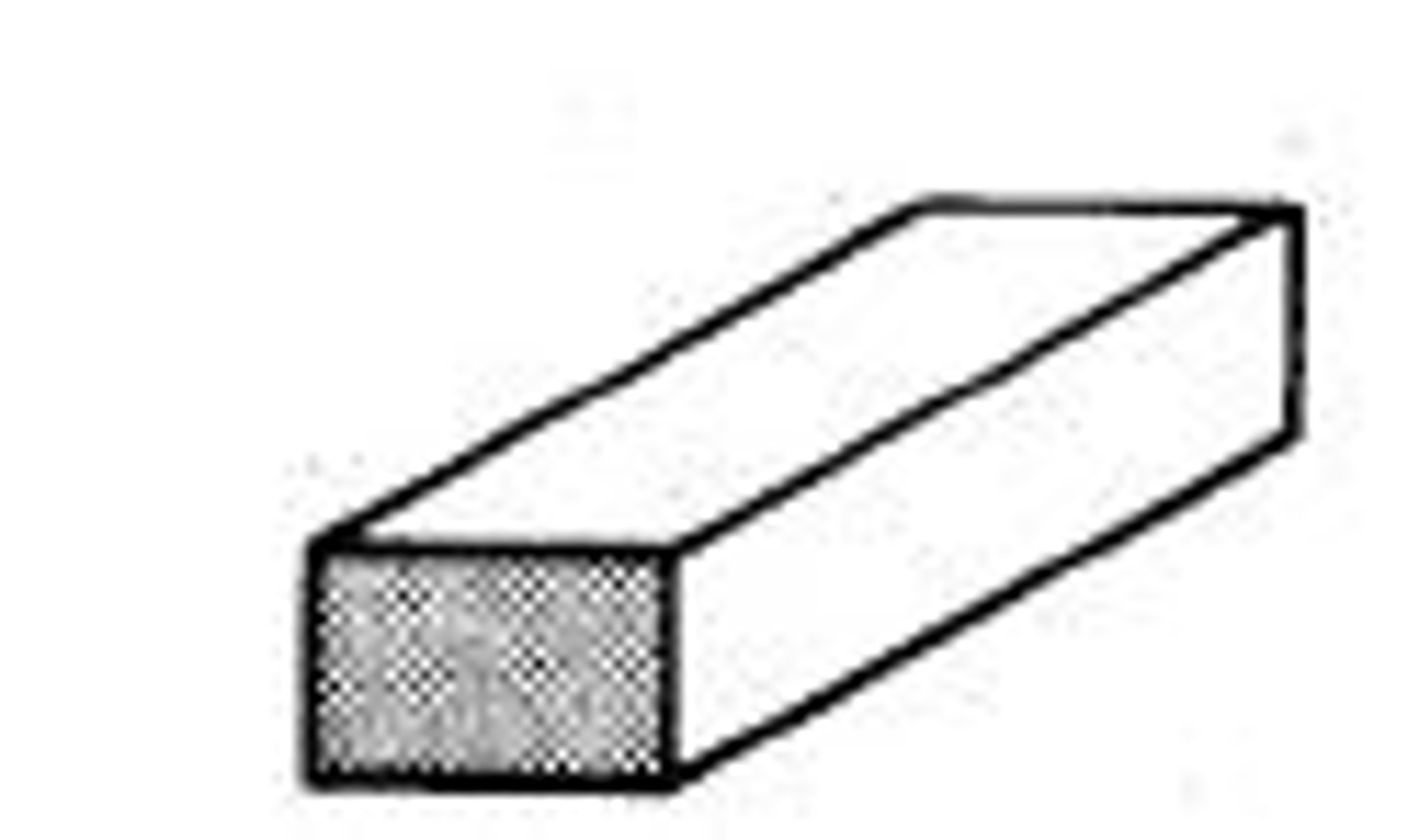
Heading course
A course in which the bricks or other masonry units are all headers.
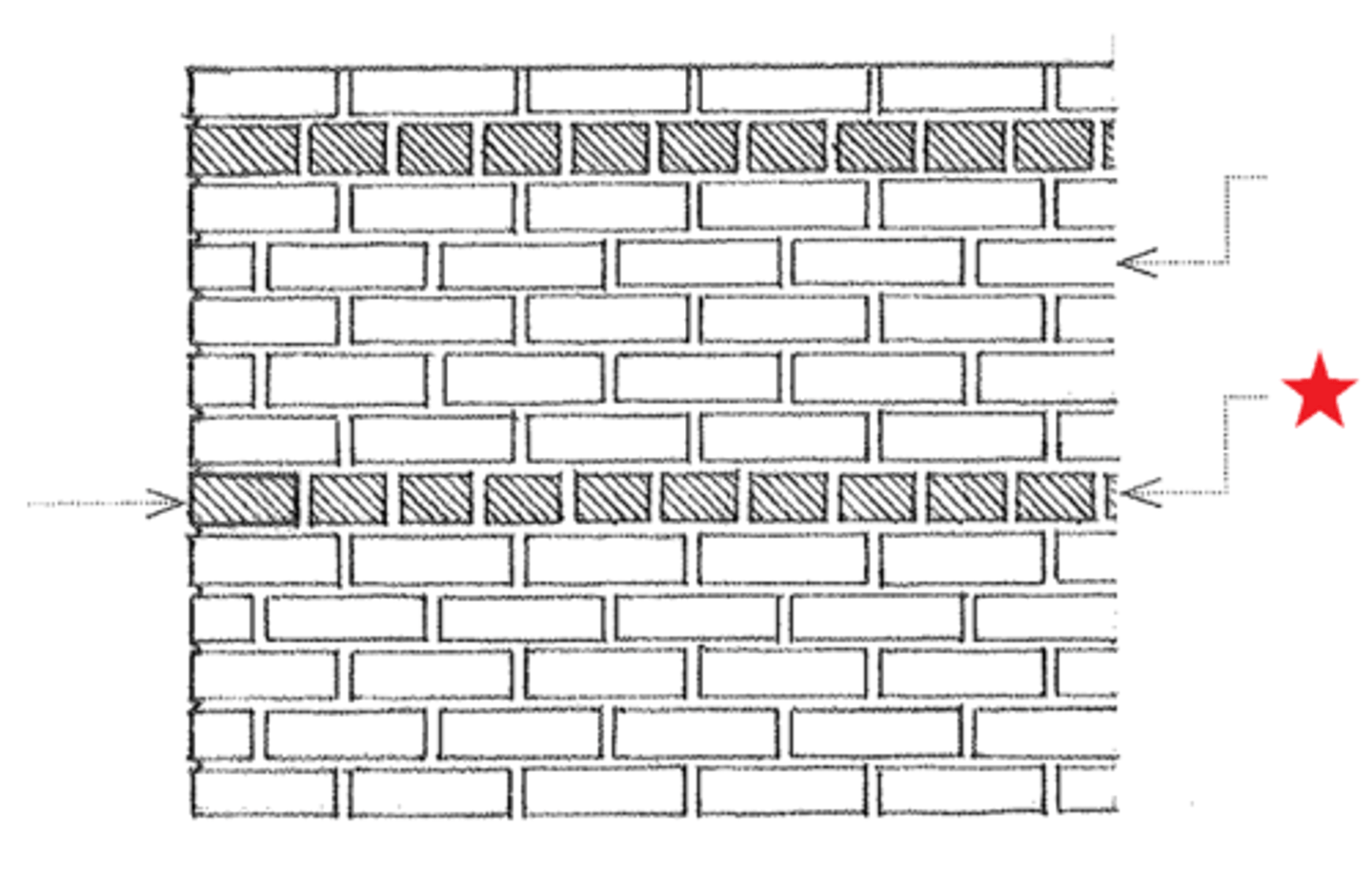
Soldier
A masonry unit laid on its end with its face perpendicular to the face of the wall.
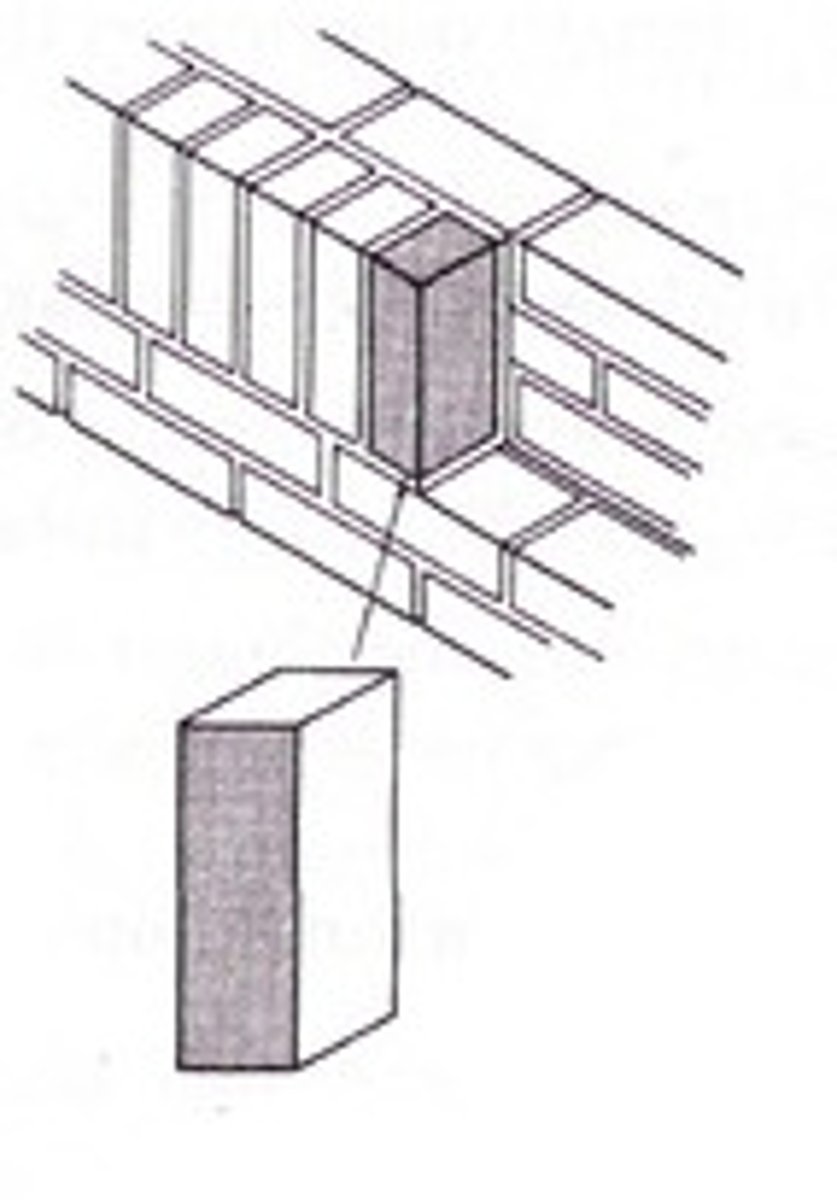
Quoins
The corner stones at the angles of buildings, usually rusticated so as to project from the normal surface of the wall.
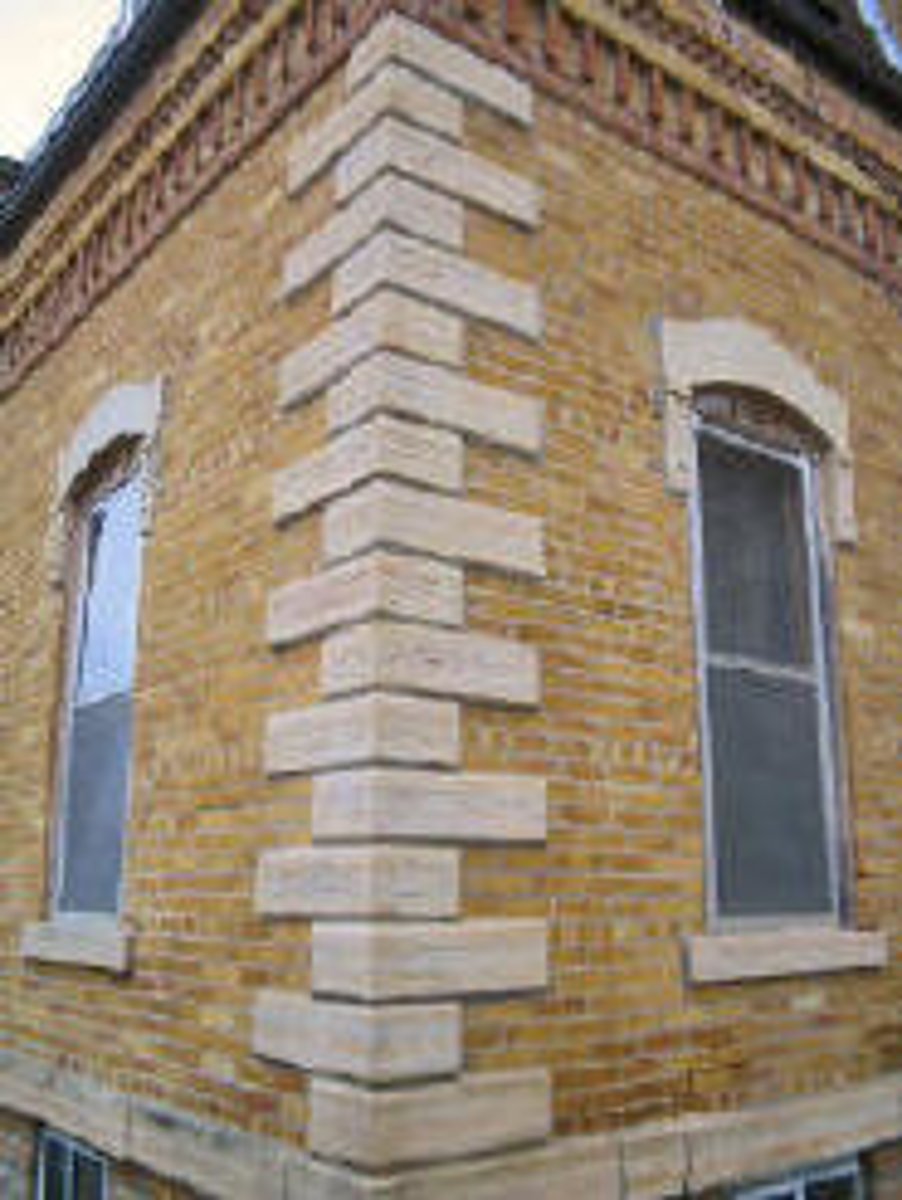
Bond stones
Stones running through the thickness of the wall at right angles to its face, in order to bind it together
Blocking course
A course of stones placed on top of cornice crowning the walls.
Running bond
This is the simplest bricklaying pattern which is used in cavity and veneer walls.
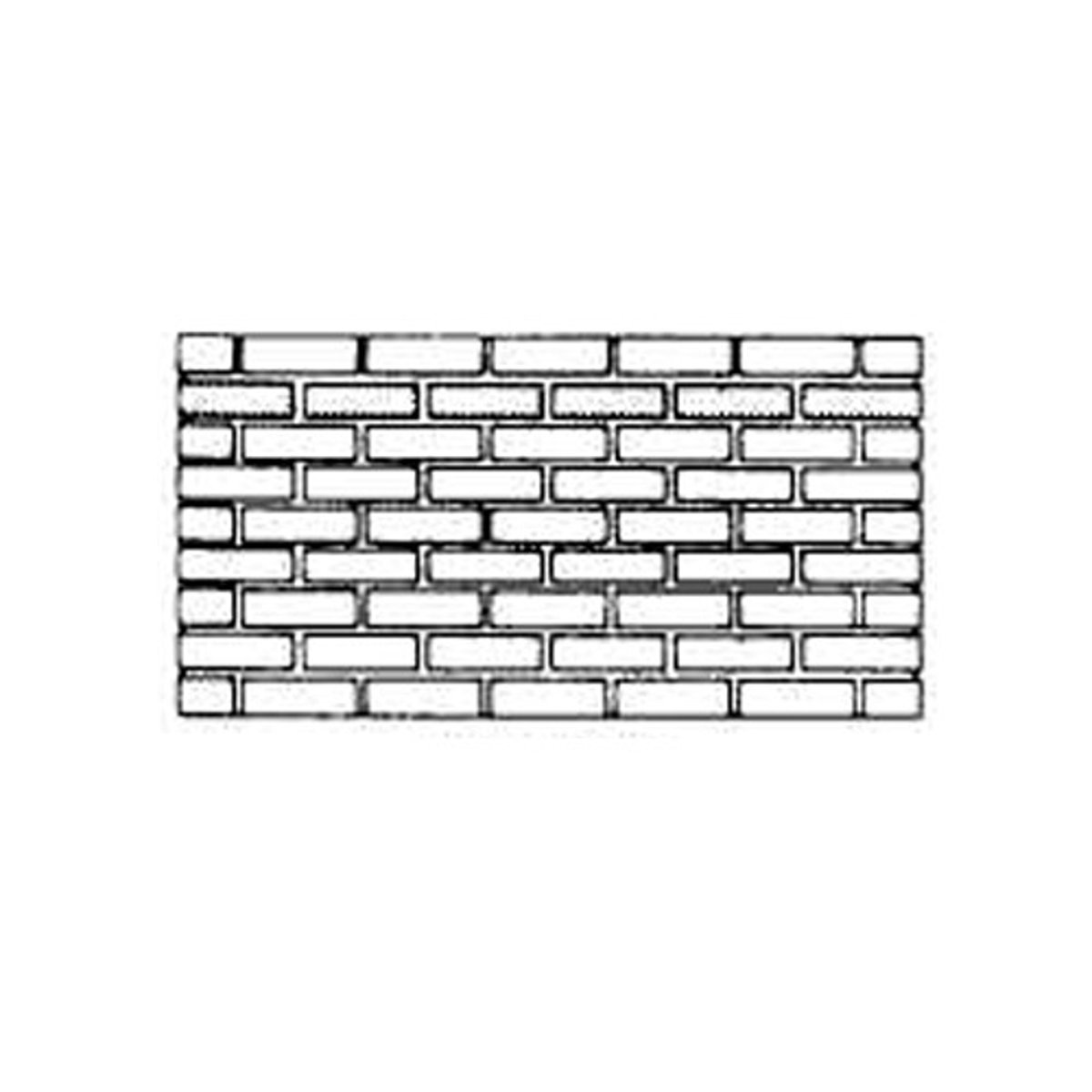
Common bond
This is similar to running bond except for a header course at every 5th, 6th, or 7th course.
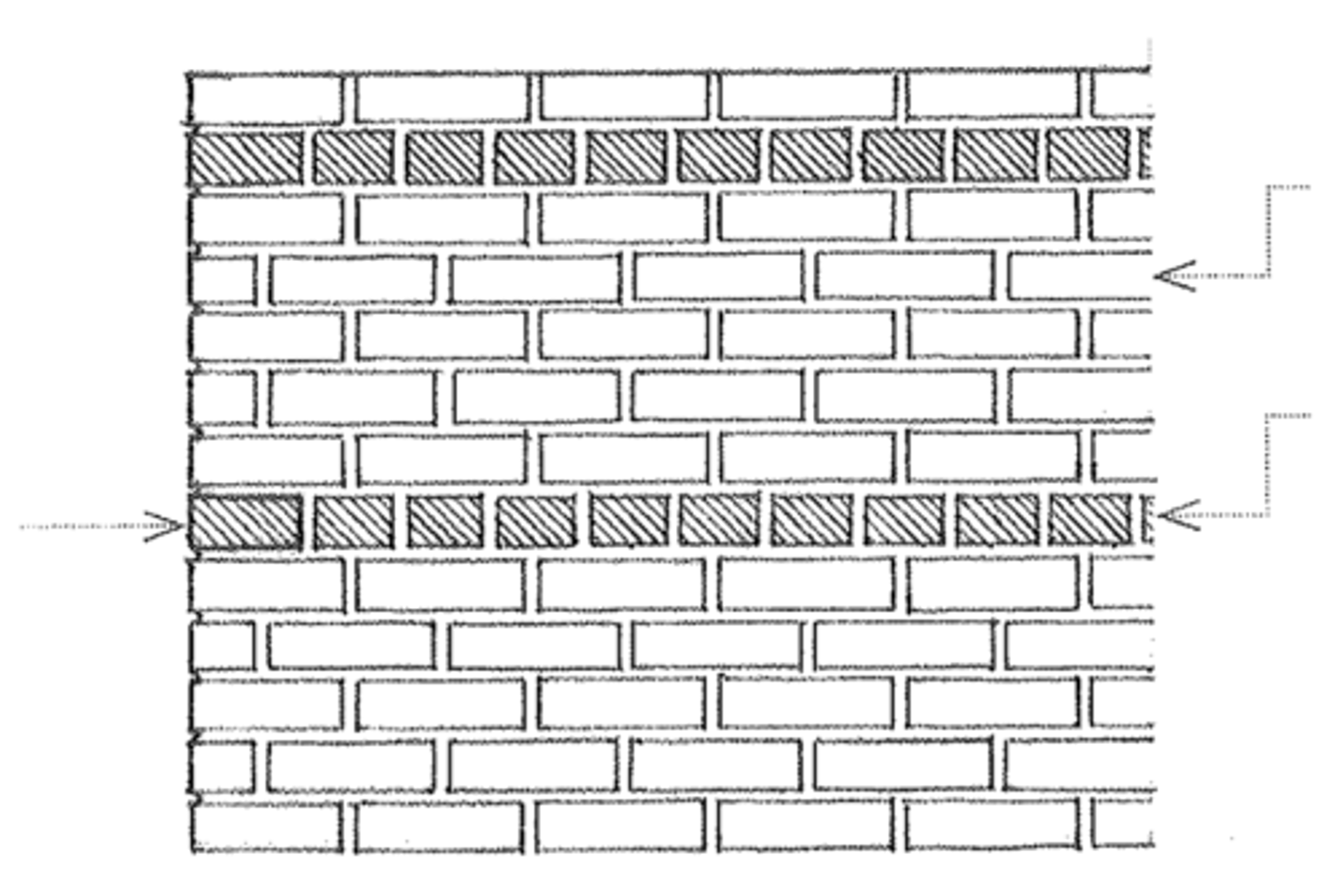
Stack bond
A brickwork or masonry bond having successive courses of stretchers with all head joints aligned vertically. Since units do not overlap, longitudinal reinforcements are needed for these.
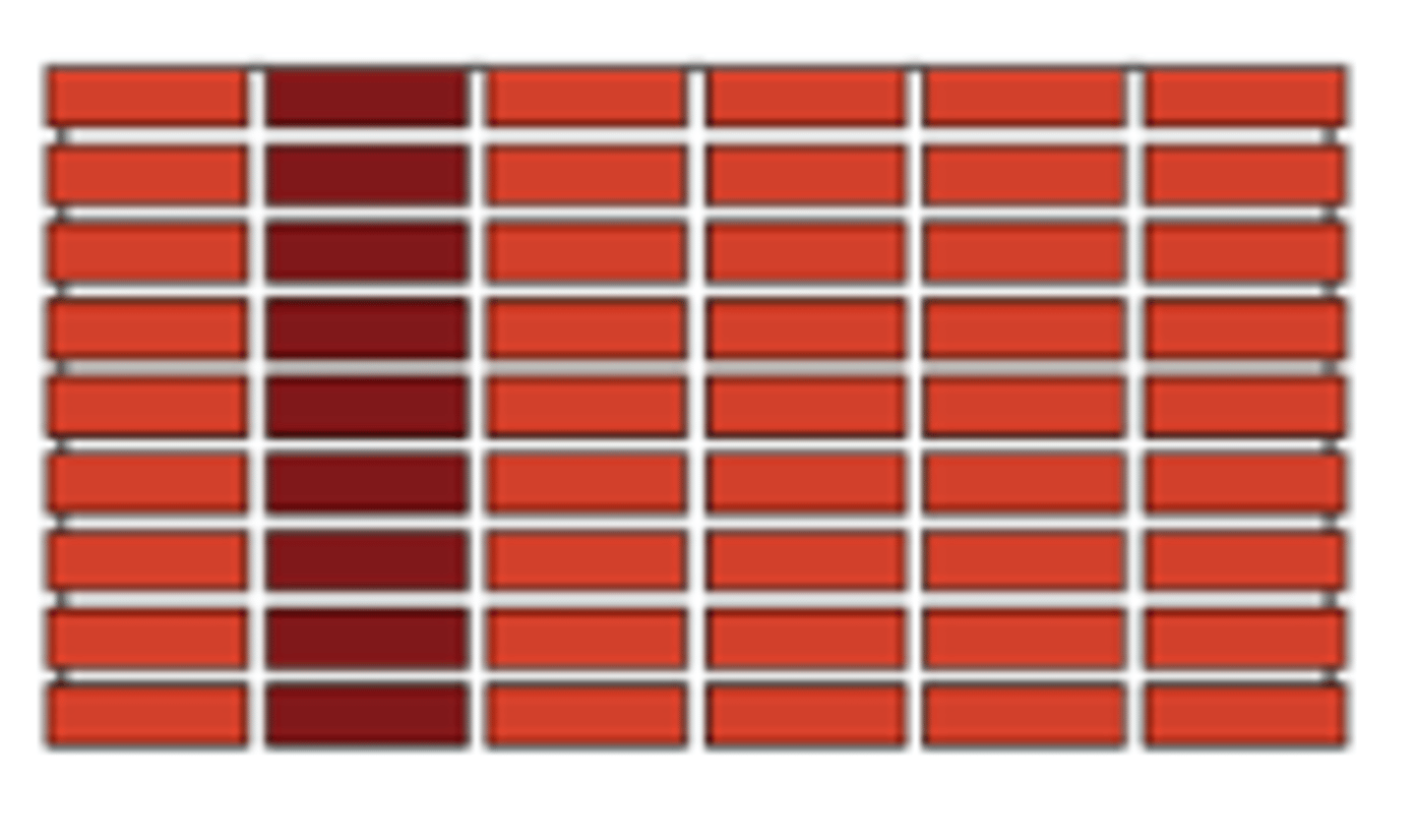
Flemish bond
Type of bond where each course consists of alternating headers and stretchers.

English bond
Pattern consists of alternating stretcher and header courses.
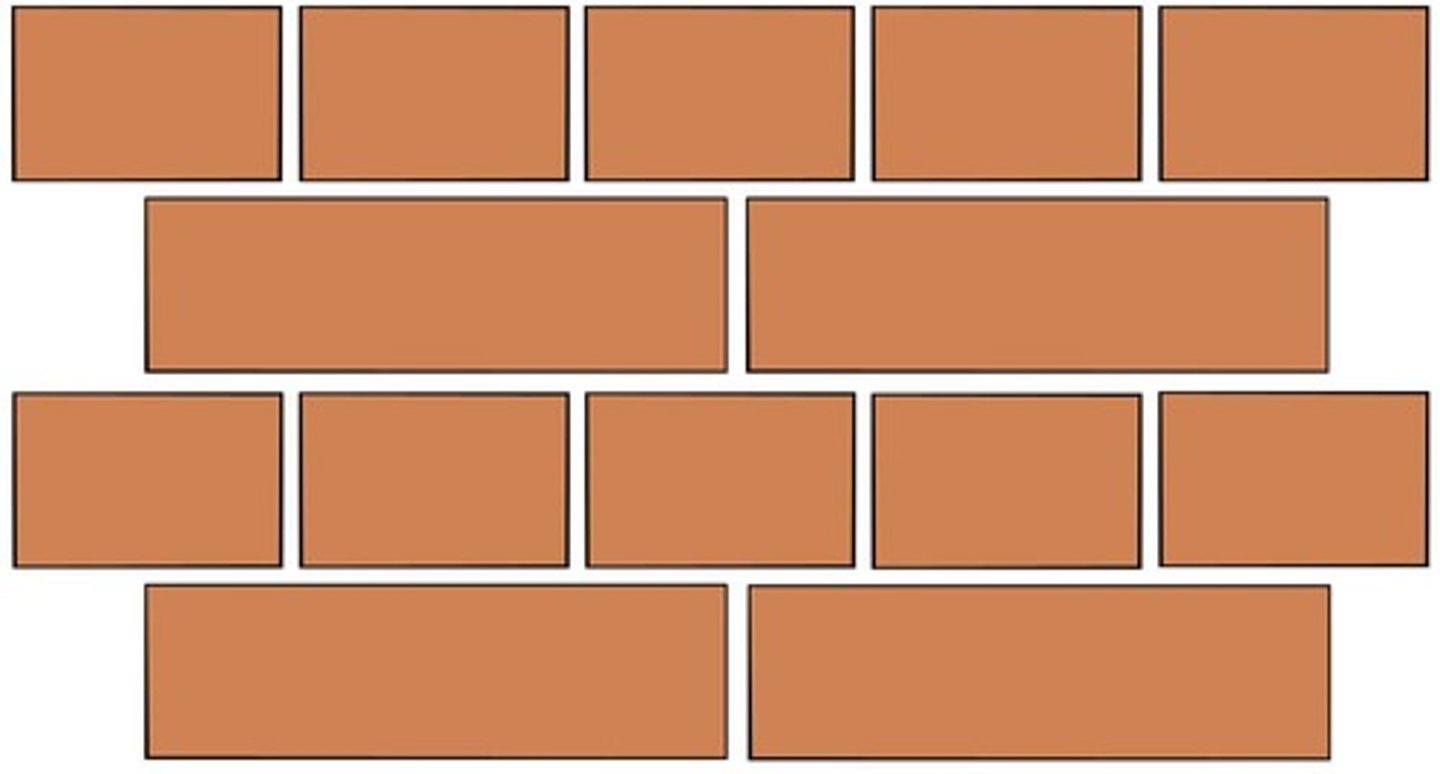
4.5 mm to 12 mm
Mortar joint thickness between brick courses
Concrete Hollow Blocks
A hollow or solid concrete masonry unit (CMU) consisting of Portland cement and suitable aggregates combined with water. Also called cement block.
100 mm
How thick should horizontal and vertical joints for CHB layouts be?
12.5
How many pieces of hollow blocks are needed to cover one square meter?
Wall footing
A strip of reinforced concrete wider than the wall which distributes the load to the soil. It shall equal 0.2% to 0.3% of the cross sectional area of concrete.
Hooked bar
A concrete reinforcing bar whose end is bent to improve its anchorage, generally through 90° or 180°. This anchors CHB to concrete.
Dowel-bar reinforcement
Short, reinforcing bars of steel which extend approximately equally into two abutting pieces of concrete, to increase the strength of the joint; used in joint with columns or beams.
Stiffener columns
These support CHB partition walls from vertical lateral movements. It is located at the intersections of CHB walls and at regular intervals of 3 meters for a long partition wall. It may take a form of an I, T, or L.
Stiffener beams
These support CHB partition walls from horizontal lateral movements.
Lintel
A horizontal structural member (such as a beam) over an opening which carries the weight of the wall above it; usually of steel, stone, or wood.
Lintel Blocks
This is used to construct lintels. It has a single core with an open end and is usually placed with its open end upright. It forms a continuous beam when filled with grout and proper reinforcement. Also known as U-blocks.
Mortar
A plastic mixture of cement, or lime, or a combination of both , with sand and water, used as a bonding agent in masonry construction.
Cement mortar
Made by mixing Portland cement, sand, and water
Lime mortar
A mixture of lime, sand and water that is rarely used because of its slow rate of hardening and low compressive strength.
Cement-lime mortar
A cement mortar to which lime is added to increase its plasticity and water retentivity.
Masonry cement
A proprietary mix of Portland cement and other ingredients, such as hydrated lime, plasticizers, air-entraining agents and gypsum requiring only the addition of sand and water to make cement mortar.
Scrim tape
It is also known as gypsum tape. It fills the gaps formed where gypsum boards join together. It is then covered with putty and smoothed over with sandpaper.